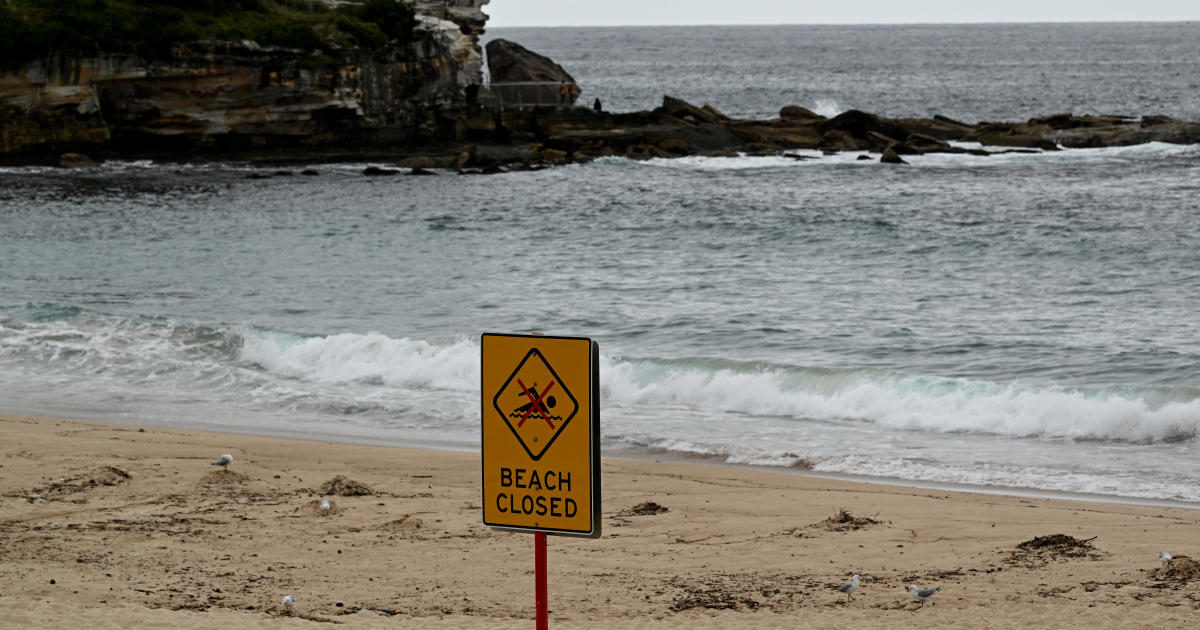The recent appearance of hundreds of mysterious black, tar-like balls on Sydney’s Coogee Beach and Gordon’s Bay has sparked significant concern and prompted immediate beach closures. These unusual, spherical objects, ranging in size from golf balls to baseballs, have baffled local authorities and scientists alike. The situation highlights the unpredictable nature of marine debris and underscores the importance of swift investigation and environmental monitoring to determine the source, composition, and potential environmental impact of such occurrences. While initial hypotheses point towards the possibility of tar balls formed from oil spills or seepage, conclusive identification and remediation strategies remain crucial. The event also draws attention to the increasing frequency of unusual marine debris washing ashore globally, further emphasizing the need for robust coastal management and pollution control measures.
Identification and Composition of the Mysterious Balls
Initial Hypotheses and Investigations
The Randwick City Council, in a social media statement, suggested the possibility of “tar balls,” a byproduct of oil coming into contact with debris and water. This formation typically arises from oil spills or natural oil seepage. However, definitive identification requires detailed analysis. Samples have been collected by authorities and sent to laboratories for thorough examination to determine the exact composition of the material. This scientific analysis will include tests to determine the chemical makeup, identify potential sources of the oil (if applicable), and assess the potential toxicity to marine life and humans. Without comprehensive lab results, conclusions remain purely speculative, hindering immediate cleanup efforts and preventing further assessment of the environmental implications.
Importance of Lab Results and Further Testing
The absence of confirmed identification complicates both the immediate response and long-term mitigation strategies. While the tar ball theory provides a preliminary working hypothesis, other potential sources need consideration. The investigation requires comprehensive chemical analysis to distinguish between naturally occurring oil deposits and man-made pollutants, providing crucial information for tracing the origin. Microscopic analysis can also provide clues by revealing organic or inorganic components present in the substance. This meticulous analysis will guide appropriate actions – informing effective cleaning strategies, guiding further investigations to pin down the source of contamination and prevent future occurrences, and ensuring public safety. The lack of conclusive identification thus emphasizes the importance of robust testing procedures and environmental monitoring systems.
Environmental Impact and Public Safety Concerns
Potential Risks to Marine Life and Ecosystems
The presence of unknown substances on beaches poses risks to both the marine ecosystem and public health. Oil-based substances can be highly toxic to marine organisms. Ingestion or exposure can negatively impact marine life, causing physiological problems or mortality, affecting the food chain and the broader ecosystem. The spread of pollutants could cause significant damage to sensitive coastal habitats, such as seagrass beds or coral reefs, leading to potentially irreversible damage. Therefore, understanding the chemical makeup is vital to evaluate the short-term and long-term consequences on the local environment.
Public Health Precautions and Beach Closures
The beach closures in Coogee and Gordon’s Bay reflect the proactive measures taken to safeguard public safety. The unknown composition of the balls creates an immediate public health concern, particularly for beachgoers, children and pets. Contact with toxic substances can result in skin irritation or other adverse health effects. Until the material is identified and declared safe, continued beach closure remains a responsible and preventative measure. Regular updates and advisories from local authorities will play an important role in communicating public health advice to residents and visitors, thereby ensuring both human and environmental wellbeing.
Origin and Source Identification – Ongoing Investigation
Difficulties in Tracing the Source of the Debris
Determining the origin of the black balls represents a significant challenge. Ocean currents can carry marine debris vast distances making precise pinpointing of the source problematic. Investigating potential sources might involve collaborations with maritime agencies to identify any oil spills or unusual vessel activity in recent weeks that could potentially be linked to the event. Analysis of currents and prevailing wind patterns can provide possible trajectories of movement of the debris which can help narrow down areas of investigation. It may involve analyzing potential sources inland as well. The more precise the investigation, the greater the chance of remediation and of preventing similar instances in future.
Importance of International Collaboration and Data Sharing
Investigating occurrences of unusual marine debris requires a broader approach, often needing collaborative international efforts. The debris might originate from beyond Australian territorial waters and involve international shipping routes. This will allow the sharing of valuable data and methodologies, helping researchers worldwide improve the understanding of the source, spread and mitigation methods associated with marine pollution and mysterious occurrences. Sharing information in such occurrences would help enhance the ability to act swiftly in similar situations in the future.
Takeaway Points:
- The mysterious black balls on Sydney beaches highlight the unpredictable nature of marine pollution and the need for robust environmental monitoring.
- Identifying the composition of the debris is crucial for assessing environmental and public health risks and developing appropriate cleanup strategies.
- Determining the source of the pollution requires extensive investigation, potentially involving international collaboration.
- Proactive beach closures and public health advisories are essential to protect public safety.
- Continued monitoring and research are necessary to understand the long-term consequences of this incident and prevent similar future events.









